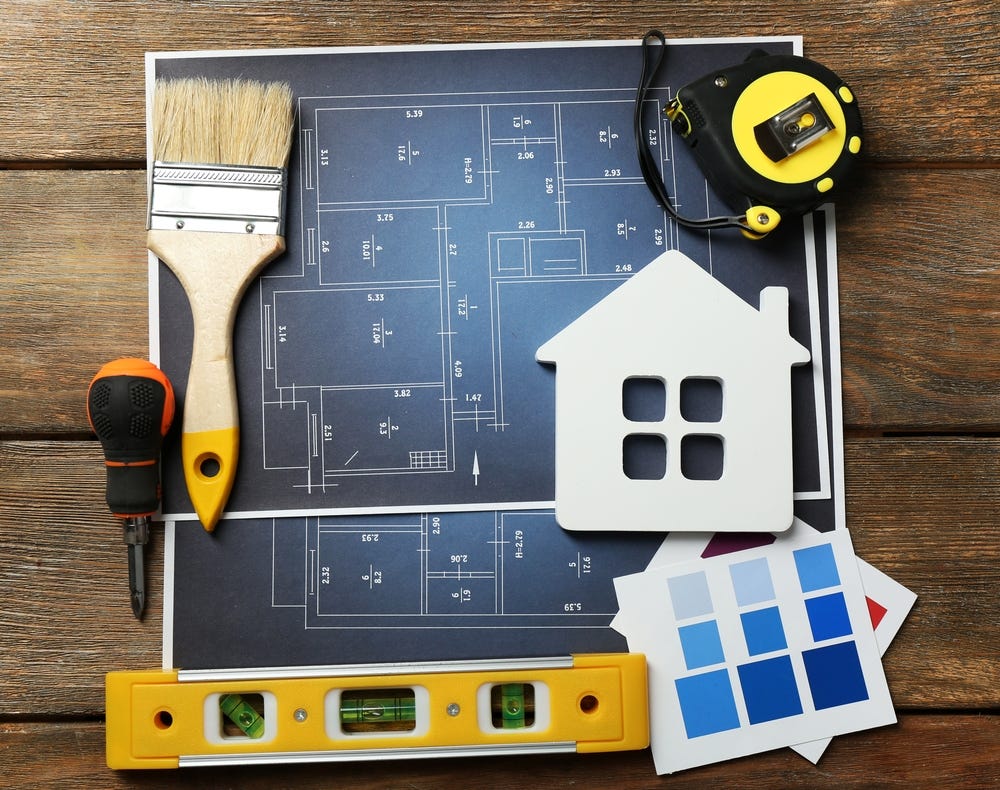Save money on insurance and spruce up your house. Win-win.
While we all want to find the lowest homeowners insurance rates possible, it’s important to remember that the very lowest rates may not come with the best coverage. So consider this our disclaimer: we’re all about saving money on insurance, but as you pursue lower rates, be sure to read the fine print to make sure you’re getting adequate protection.
Now to the good stuff.
If you’re looking for the lowest homeowners insurance rates within reason (i.e., the lowest rates that still offer solid coverage and great customer service), you may be able to find them by investing in certain home updates. And yes, we are saying that you can spend money on your home to save money on insurance, but look at it this way: if you’re considering any of these updates or remodels anyway, take a second look with insurance savings in mind. You may like what you see.
6 home updates for lower home insurance rates
Remember: every insurance carrier is different. Before you undertake any of these updates, check with your insurance provider to see whether (and how) they might lower your rates. You may have to follow specific guidelines to enjoy any financial savings.
- New roof: The good news is that you’ll have to replace your roof eventually anyway. The bad news is that it won’t be cheap. But the second batch of good news is that if you talk to your insurance provider before getting your new house lid, you could have a lower insurance bill when the work is done. Your insurance provider’s guidelines will likely have to do with making your roof safer, less prone to leaking, and more wind-resistant, so even if the insurance savings are modest, you’ll also be less likely to face costly repairs down the road.
- Centrally monitored burglar alarm: Insurance companies offer discounts for updates that make your house safer. Centrally monitored burglar alarms do that by offering a service that keeps track of when your alarm is tripped (so they can check in and send help, if necessary). That also means monitored alarms tend to cost more, but you may make up the difference in insurance premium savings.
- Updated electrical system: How old is your house? If it’s on the older side – or if your circuit breaker hasn’t been updated for 40 years or more, it’s probably time for an upgrade. Other signs: your lights dim when you turn on appliances or you use a lot of extension cords because there just aren’t enough outlets. Old or inadequate electrical infrastructure is a fire hazard. If you’ve got suspicions about your system, reach out to a local electrician for a consultation (and estimate, if necessary). Unless you yourself are an electrician, we don’t recommend trying to DIY this project.
- Updated plumbing: Old wires can cause fires; old pipes can cause floods (sorry, no rhymes today). Most plumbing is hidden, but if you notice puddles behind appliances, floors warping from water, or mold and mildew in your crawl space, parts of your plumbing may need to be updated. The good news is that, often, it’s only connectors that wear out rather than entire pipes. To stay on top of your plumbing, investigate the status of your pipes any time you renovate your kitchen or bathroom – and plan on making some repairs.
- Stationary generator: Some insurance companies offer discounts for keeping a generator on the premises so you can keep your appliances functioning in the event of a power outage like a major storm. A generator may allow you to stay in your home when the power’s out, which is a major theft deterrent – and therefore an insurance claim deterrent.
- Smoke detectors: All homes are required to have smoke detectors, but some are better at preventing losses than others. Monitored alarms trigger notifications to first responders, which increases the odds that they’ll get to your home quickly and minimize any damage from fire or smoke. Some insurance companies offer discounts for a monitored smoke alarm, which they see as a great way to mitigate loss.
Remodeling projects that can prevent insurance claims
Not all remodeling projects qualify for a lower homeowners insurance premium, but some may prevent your risk of claims by making your home a safer place. Here are a few to consider:
- Adding grab bars to bathrooms to prevent falls and injuries for older or weaker guests.
- Updating exterior lighting and lighting around stairs to prevent slips, trips, and falls.
- Repairing cracks in your sidewalk and driveway before they become a tripping hazard.
Whether you’re remodeling for the heck of it or because you’re on the prowl for the lowest homeowners insurance rates, be sure to check with your insurance provider before making any changes. While you’re on the phone, make sure you don’t need to make changes to your current policy to accommodate the work being done.


